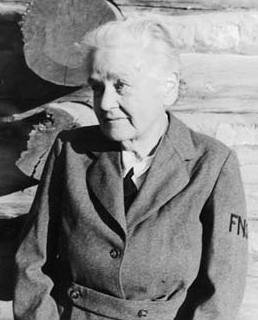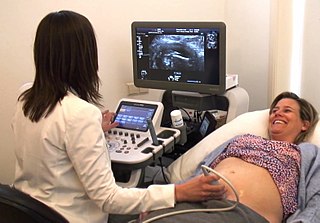
The Nursing and Midwifery Council (NMC) is the regulator for nursing and midwifery professions in the UK. The NMC maintains a register of all nurses, midwives and specialist community public health nurses and nursing associates eligible to practise within the UK. It sets and reviews standards for their education, training, conduct and performance. The NMC also investigates allegations of impaired fitness to practise.
Nurse education consists of the theoretical and practical training provided to nurses with the purpose to prepare them for their duties as nursing care professionals. This education is provided to student nurses by experienced nurses and other medical professionals who have qualified or experienced for educational tasks, traditionally in a type of professional school known as a nursing school of college of nursing. Most countries offer nurse education courses that can be relevant to general nursing or to specialized areas including mental health nursing, pediatric nursing, and post-operative nursing. Nurse education also provides post-qualification courses in specialist subjects within nursing.

Yale School of Nursing (YSN) is the nursing school of Yale University, located in West Haven, Connecticut. It is among the top 20 graduate schools in the country, according to the latest rankings by U.S. News & World Report (2017). In addition to the top 20 tier overall ranking, the school’s midwifery specialty had the second-highest score nationally as ranked by peer institutions. Yale School of Nursing’s psychiatric-mental health specialty ranked sixth, and its pediatric nurse practitioner specialty came in at fifth in a three-way tie. Yale’s School of Nursing remains among the most selective in the nation, with only 20% of applicants estimated to be accepted.
Nursing in the United Kingdom has a long history. The current form of nursing is often considered as beginning with Florence Nightingale who pioneered modern nursing. Nightingale initiated formal schools of nursing in the United Kingdom in the late 19th and early 20th centuries. The role and perception of nursing has dramatically changed from that of a handmaiden to the doctor to professionals in their own right. There are over 700,000 nurses in the United Kingdom and they work in a variety of settings, such as hospitals, health centres, nursing homes, hospices, communities, military, prisons, and academia, with most working for the National Health Service (NHS). Nurses work across all demographics and requirements of the public: adults, children, mental health, and learning disability. Nurses work in a range of specialties from the broad areas of medicine, surgery, theatres, and investigative sciences such as imaging. Nurses also work in large areas of sub-specialities such as respiratory, diabetes, cancer, neurology, infectious diseases, liver, research, cardiac, women's health, sexual health, emergency and acute care, gastrointestinal, infection prevention and control, neuroscience, ophthalmic, pain and palliative, and rheumatology. Nurses often work in multi-disciplinary teams but increasingly are found working independently.

The Frontier Nursing Service (FNS) provides healthcare services to rural, underserved populations since 1925, and educates nurse-midwives since 1939.

Mary Carson Breckinridge was an American nurse midwife and the founder of the Frontier Nursing Service (FNS), which provided comprehensive family medical care to the mountain people of rural Kentucky. FNS served remote and impoverished areas off the road and rail system but accessible by horseback. She modeled her services on European practices and sought to professionalize American nurse-midwives to practice autonomously in homes and decentralized clinics. Although Breckinridge's work demonstrated efficacy by dramatically reducing infant and maternal mortality in Appalachia, at a comparatively low cost, her model of nurse-midwifery never took root in the United States.

Nursing in Australia has evolved in training and regulation since the 19th century.
Midwives in the United States assist childbearing women during pregnancy, labor and birth, and the postpartum period. Some midwives also provide primary care for women including well-woman exams, health promotion, and disease prevention, family planning options, and care for common gynecological concerns. Before the turn of the 20th century, traditional midwives were informally trained and helped deliver almost all births. Today, midwives are professionals who must undergo formal training. Midwives in the United States formed the Midwifery Education, Regulation, and Association task force to establish a framework for midwifery.
The history of nursing in the United Kingdom relates to the development of the profession since the 1850s. The history of nursing itself dates back to ancient history, when the sick were cared for in temples and places of worship. In the early Christian era, nursing in the United Kingdom was undertaken by certain women in the Christian Church, their services being extended to patients in their homes. These women had no real training by today's standards, but experience taught them valuable skills, especially in the use of herbs and folk drugs, and some gained fame as the physicians of their era. Remnants of the religious nature of nurses remains in Britain today, especially with the retention of the job title "Sister" for a senior female nurse.

A midwife is a health professional who cares for mothers and newborns around childbirth, a specialization known as midwifery.
Project 2000 was a higher education scheme in the United Kingdom for nursing qualifications, introduced in 1990 by the United Kingdom Central Council for Nursing, Midwifery and Health Visiting (UKCC), later the Nursing and Midwifery Council (NMC). The development was led by Margaret Dorothy Green.
Dora Kwartiorkor Opoku OBE was a midwife and educationist who was an authority in the field of medical research ethics.
Elizabeth Mary Chiarella AM is an Australian academic who specialises in issues relating to nursing, midwifery and the law. She is Professor Emerita at the University of Sydney, Australia and has been at the forefront of many regulatory changes to nursing practice and the nursing workforce and midwifery. These include the introduction of nurse practitioners into Australia, the move from a state based to a national regulatory system and, for midwifery, the introduction of the world's first Doctor of Midwifery and the establishment of the framework for state funded home birth midwifery in New South Wales (NSW), Australia. She is a nurse and midwife, who specialised initially in anaesthetic nursing and later in palliative care.
The Nursing & Health Care School, University of Glasgow, is a speciality area within the School of Medicine, Dentistry and Nursing in Glasgow, Scotland. The School has offered a degree course in Nursing since 1977, introduced under the Dean of the Faculty of Medicine at the time, Professor Edward McGirr.

The Nurses, Midwives and Health Visitors Act 1979 was an Act of Parliament of the United Kingdom. It received royal assent in April 1979.
The Salmon Report (1966) or the Salmon Report on Senior Nursing Staff Structure was the report of a committee established to bring standardisation in structure and pay for senior hospital nurses in England and Scotland. The report recommended changes to how nurses jobs were categorised in hospitals and management training for nurses.
The Platt Report (1964) or the Platt Report(s) on the Reform of Nursing Education was the report of Harry Platt upon the investigations of a committee established by the Royal College of Nursing (RCN). It made recommendations about how nurses should be educated and what prior qualifications should be required in order to begin nurse training in England.
The Mayston Report (1969) or the Report on Management Structure in the Local Authority Nursing Services was the report of a working party appointed to consider improvements to the management of United Kingdom local authority nursing services in the way that the Salmon Report had examined management of hospital nurses.
The Judge Report (1985) or the Report of a Commission on Nursing Education was the report of a committee established by the Royal College of Nursing to consider a different approach for nursing education in the United Kingdom.








